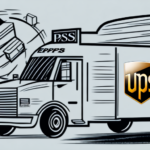How to Transfer UPS WorldShip Data Easily and Quickly
If you are a business owner or a logistics professional, you are likely familiar with UPS WorldShip, a leading shipping software application utilized by many companies worldwide. While WorldShip offers various features to streamline shipping operations, transferring data between systems can be challenging. With the right approach and tools, you can ensure a smooth and efficient data transfer process. This article covers everything you need to know about transferring UPS WorldShip data easily and quickly.
Understanding the Importance of UPS WorldShip Data Transfer
Data transfer is critical for maintaining accurate and up-to-date shipping records. It enables seamless integration of WorldShip with other shipping or order management systems you may use. Frequent data transfers help avoid errors, minimize delays, and reduce costs associated with manual data entry.
Additionally, regular data transfer allows real-time tracking of shipments, enabling you to monitor package progress and quickly address any transit issues. This proactive approach ensures timely deliveries and enhances customer satisfaction. Streamlining the data transfer process also improves overall operational efficiency, allowing you to focus on other business aspects.
Common Challenges in Transferring UPS WorldShip Data
Incompatible File Formats
One of the primary challenges is dealing with incompatible file formats. Different systems generate data in varying formats, making seamless data transfer difficult. Transferring large volumes of data can also slow down the process and increase the likelihood of errors or data loss.
Lack of Proper Documentation
Without proper documentation, understanding the data being transferred can be challenging, leading to errors and misinterpretations. This may result in incorrect data transfers, causing further complications and delays.
Security Concerns
Data transfer often involves sensitive information such as customer details, addresses, and payment information. Ensuring secure data transfer is crucial to prevent data breaches and protect customer privacy, thereby avoiding legal and financial repercussions.
Best Practices for a Smooth and Hassle-Free Data Transfer
Automate the Data Transfer Process
Automation minimizes errors and delays, significantly reducing the time and effort required for data transfer. Utilizing compatible software solutions that can read and convert various data formats is essential. Establishing a well-defined data transfer policy with clear guidelines and instructions also helps minimize confusion and improve transfer accuracy.
Regularly Test the Transfer Process
Testing helps identify potential issues or errors before they become significant problems. Implementing a backup plan, such as a secondary data transfer method or data backups, ensures reliability and security during the transfer process.
Step-by-Step Guide to Transferring UPS WorldShip Data
- Export Data from WorldShip: Utilize the export feature in WorldShip to extract the necessary data.
- Save Data in a Compatible Format: Choose formats like CSV or XML for saving the exported data.
- Convert the Format if Necessary: Use a file conversion tool to adapt the data into a suitable format for the receiving system.
- Import Data into the Receiving System: Use the import feature of the receiving system to incorporate the saved or converted data.
- Verify Data Accuracy: Employ verification tools to ensure the imported data is accurate and error-free.
Before transferring data, always create a backup of the original data to prevent loss or corruption. Additionally, test the transfer process with a small dataset to ensure everything functions correctly before proceeding with the entire dataset.
Tips to Improve the Speed and Accuracy of Your UPS WorldShip Data Transfer
- Regularly clean your data to eliminate duplicates, errors, and outdated information.
- Utilize automation tools to streamline data transfer and reduce manual efforts.
- Invest in robust software that supports multiple data formats.
- Train your staff on proper data transfer protocols to minimize human error.
- Standardize your data transfer process to enhance consistency and accuracy.
Keeping your software and hardware updated is also crucial. Outdated technology can slow down the transfer process and increase error risks. Ensure your systems are current to maintain optimal performance.
Having a backup plan, such as a secondary system or regular data backups, is essential to handle unexpected issues during the data transfer process, preventing data loss or corruption.
Troubleshooting Common Errors During UPS WorldShip Data Transfer
Missing Data and Incorrect Formatting
Review transfer logs to identify errors or warning messages. Replicate the issue and test different solutions until resolved. If problems persist, contact your software provider or IT support team for assistance.
Duplicate Entries
Duplicate data entries cause confusion and errors. Ensure accurate data entry and utilize UPS WorldShip's built-in duplicate detection features to identify and remove duplicates.
Interrupted Data Transfer
Power outages or system crashes can interrupt data transfers, leading to incomplete or corrupted data. Use an uninterruptible power supply (UPS) to maintain system power during outages and regularly back up your data to prevent loss.
Benefits of Automating the UPS WorldShip Data Transfer Process
- Minimizes errors and data loss.
- Reduces the time and effort required for data transfer.
- Increases the accuracy of shipping records.
- Facilitates integration with other systems.
- Ensures scalability for future growth.
Automating the UPS WorldShip data transfer process helps businesses save money by reallocating resources more efficiently. It also enhances customer satisfaction by ensuring accurate shipping records and timely deliveries, thereby building customer loyalty. Integrating WorldShip with other systems streamlines the entire shipping process, resulting in faster turnaround times and improved operational efficiency.
Comparison of Different Tools and Software for UPS WorldShip Data Transfer
Choosing the right software tools is crucial for a smooth and efficient data transfer process. Some popular options include:
- DataRobot: Offers an all-in-one solution for data transfer, backup, and synchronization.
- Microsoft Power Automate: Provides a no-code solution for automating data transfer workflows.
- Kapow: Offers a web-based data integration platform supporting various data formats.
- Jitterbit: Provides a cloud-based data integration platform for automating workflows.
When selecting a tool or software, consider your business's specific needs, including the size of your operations, data transfer volume, and required automation level. Reading reviews and comparing pricing options can also aid in making an informed decision.
Case Studies: Real-Life Examples of Successful UPS WorldShip Data Transfer Implementation
Numerous companies have successfully implemented UPS WorldShip data transfer to enhance their operations. For example, Company X struggled with managing shipping records manually. By adopting an automated data transfer tool, they transferred data quickly and accurately, saving time and reducing costs.
Company Y faced challenges with multiple vendor systems generating data in different formats. Using a conversion tool and standardizing their data transfer process, they seamlessly integrated data from various systems, achieving greater efficiency.
Another example is Company Z, which dealt with inaccurate shipping data due to manual entry errors. Implementing a barcode scanning system that automatically transferred data to UPS WorldShip eliminated errors and improved shipping record accuracy, enhancing customer satisfaction through timely and precise deliveries.
Overall, transferring UPS WorldShip data easily and quickly is essential for optimizing business operations. By following best practices, utilizing the right tools, and automating processes where possible, you can ensure a smooth and efficient data transfer process. Continually reviewing and optimizing your process will lead to better results and improved shipping operations.
Additional Resources
For more information on optimizing UPS WorldShip data transfer, consider consulting reputable sources such as:




















